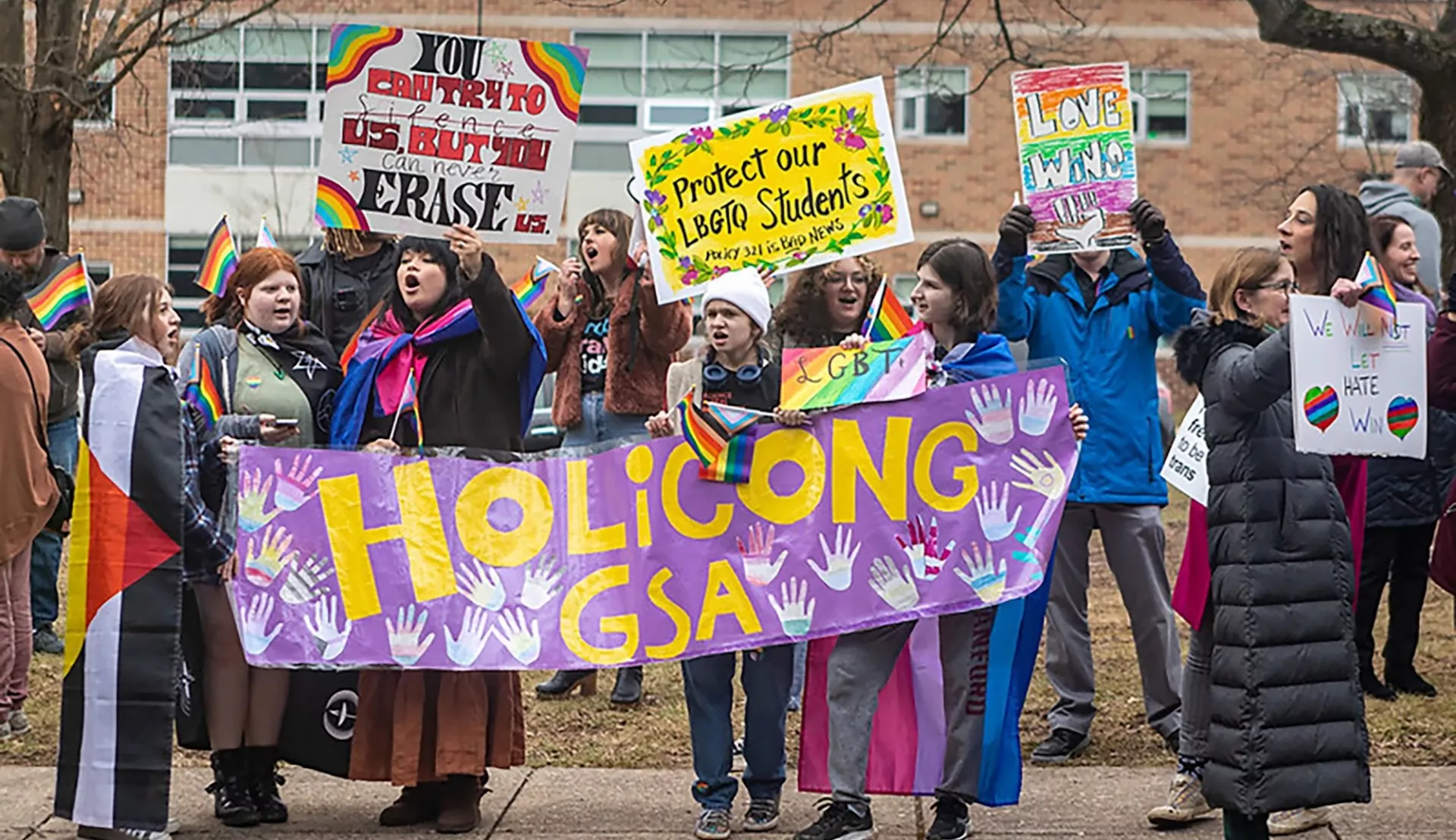Key Takeaways
- Far-right extremists and some politicians continue to sow division among communities by spreading lies and attacking educators and their classroom materials that empower students to learn, be themselves, and pursue their dreams.
- Educators, parents, and community members came together to reject radical ideologies that focused on everything but helping students get the support they need.
- Elected officials will have a hand in determining your salary, the curriculum you teach, and the books your students can read. If this matters, then get ready to vote in the November 2024 election.
In 2017, a Holicong Middle School student, from Bucks County, Pennsylvania, shared with his school principal how they were having a difficult time being in a school that had little supports in place for them. At the time, the student was beginning to identify as a transgender male and wanted a more supportive environment. They suggested a GSA club. The principal obliged.
Keith Willard, the student’s social studies teacher, jumped at the opportunity to launch the club. He recalls telling his principal: “I’ll absolutely do it, and it's going to be the best GSA."
With help from a local nonprofit, the school’s English teachers and librarians, Willard started the GSA by creating an LGBTQ+ classroom library, with curated titles that were appropriate to a middle school audience.
Within two years, he amassed about 60 titles.
In addition to having access to resources and literature, GSA members participated in local community events, such as Pride parades and art exhibitions that promoted queer and LGBTQ+ history. They met with other GSA members throughout the 17,000-student school district, too, to create a sense of community and belonging.
Willard’s library collection and field trips were always pre-approved by school administrators.
“Things had been fine,” he says, “until the fall of 2020.”
Inclusive education benefits students
Since the start, the GSA at Holicong Middle became a safe space for students—particularly the student who initially asked for the club.

Willard explains that the student was able to connect with their friends regularly and hang out, put together puzzles, play board games, or destress from the school day.
Now in college, the former student was invited, in March 2023, to speak to the GSA club. It was profound, recalls Willard.
“[They said] that the reason GSA was important to them was because when they looked around the school, they saw a heteronormative space. Nothing made them feel like they belonged—until they saw a symbol … a [Pride] flag or a book that mirrored themselves.”
Backed by research
For more than ten years, certain lawmakers have increasingly turned to anti-LGBTQ+ rhetoric and legislation as a powerful complement to the racist dog whistles they use to whip up fear and hoard power. All the while punishing educators for doing their jobs.
Despite these relentless attacks, studies continue to prove that when LGBTQ+ students attend schools where instruction and classroom materials are inclusive of LGBTQ+ people, history, and events, they experience less harassment and discrimination, do better in school and often excel, and experience a better school climate and sense of belonging, according to GLSEN.
The advocacy group’s 2024 research brief underscores this point, while also highlighting that when resources and learning materials are minimal or non-existent, students feel unsafe.
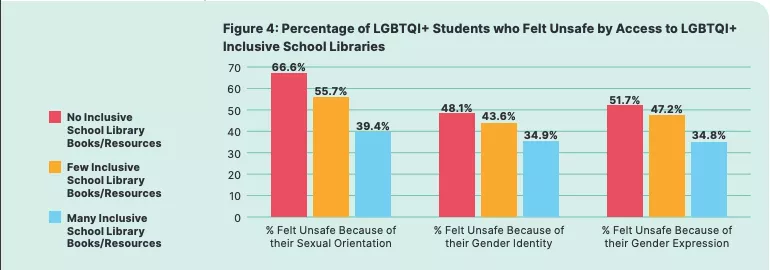
That’s why Willard, a 24-year experienced teacher, fiercely worked to keep his school as a place where all students are protected and empowered to learn, be themselves, and pursue their dreams.
So, what happened Fall 2020?
What happened was the Moms for Liberty (M4L) Bucks County chapter showed up.
It was a Monday, early in October, when Willard heard rumblings of a video making the rounds on far-right media. The video was of his classroom library.
"I was very stressed about this," shares Willard. " I thought that despite my due diligence in selecting books, I had done something wrong. The books that were chosen were deliberate and mirrored the stories of the LGBTQ+ youth in the club. I felt very alone, and suddenly the library and my work for students were a liability. That is, until my union called me Friday and provided support."
Set to music one might hear in a horror film, the video shows someone going into Willard's classroom, after school hours, and scanning book titles. No group ever claimed credit for producing the video, which had the a similar look and feel to a flyer that appeared in district office mailboxes by an individual sympathetic to the M4L agenda.
But one thing was clear: “They were looking for nefarious or inappropriate books in my library,” Willard explains.
Not finding any controversial titles, the trespassers superimposed into the video two books: “Lawn Boy” and “Gender Queer.”
“It was a really bad job,” Willard says of the doctored video. “But if you believe a narrative, and you're looking for proof of that narrative to feel validated and to get your agenda across, it doesn't need to be well done.”
It was a stressful time for Willard.
The targeted attacks to his classroom would last more than two years and would come to include book audits to determine which were age appropriate, lies and misrepresentation around GSA field trips. Equally as bad, if not worse, were the lies spread about Willard on social media and at school board meetings to insinuate “grooming.”
“Moms for Liberty individuals don't care about the chaos they create. They don't care that people's lives are destroyed. They don't care that they attack someone, like me, at a school board meeting,” he says. “They thrive on chaos and their false narrative.”
Compelled to act
When Willard first learned of the video, he was nervous.
“I really believed I must have done something wrong because I didn't know anything about Moms for Liberty back then.”
His feelings shifted after he learned more about the extremist group and their agenda to whitewash history and censor books that positively represent LGBTQ+ people and people of color, as well as their accusations of him.
“I went from feeling like I did something wrong to being angry,” he says. “Ever since then, I've been fierce about trying to preserve every one of those book titles,” adding that he didn’t remove one single book from his collection.
Willard not only preserved his library so students could have access to books that help them understand themselves and the world around them, but he’s also given testimony at school board meetings, public hearing committees, and neighboring school districts. He’s even protested at the M4L National Summit when they came to Philadelphia in 2023.
“After having Moms for Liberty people come to my classroom and misrepresent me at school board meetings, that's when I felt compelled to publicly share my experience,” he says. “They don’t get to create my narrative and talk about my life’s work and what I do for students. I do.”
Chaos can be stopped
At the height of Willard’s ordeal, board members for the Central Bucks School District, which includes schools in Bucks County, were made up of six Republican members—some of which ran on M4L platforms—and three Democrats.
This didn’t help Willard, who believed the board members with more radical ideologies supported the contentious rhetoric and actions by M4L extremists.
He also believed community members were not on M4L’s side. This belief was supported when Democrats completely flipped the school board during the 2023 November election.
The attacks against Willard and the LGBTQ+ community within the Central Bucks district ended after educators, parents, and community members came together to reject school board candidates with ML4 agendas.
“If people aren't informed, and we don't win elections, we'll have the wrong people in place,” he says. “I could never believe how crazy my life could be just because of a different school board. We need to be paying attention … or your community could be the next Central Bucks.”
And most voters are paying attention, as seen by the winning streak of pro-public education candidates, who, in 2023, won key races up and down the ballot across the country. Plus, in urban, suburban, and rural communities in both red states and blue states, right-wing culture wars fell flat at the ballot box.
“That's why we can't fall prey to individuals who say: ‘I don't want my kid to read this, but I also don't want your kid to read it either," explains Willard. “That's not the way it works. There's no way I’m withholding valuable resources from everyone.”
He adds, “I trust myself and colleagues to be the professionals that we’re trained to be and who know what's grade-level appropriate, what connects with the curriculum, and what creates a sense of belonging for the students in our classroom.”
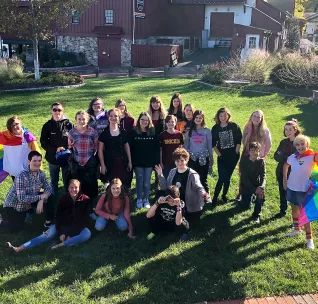

In 2017, Keith Willard, a social studies teaching, in Bucks County, Pennsylvania, started a Gay, Straight Alliance club at his school, Holicong Middle School, where student could look no further than the shelves of their own school libraries to find age-appropriate books that show they are reflected and respected.
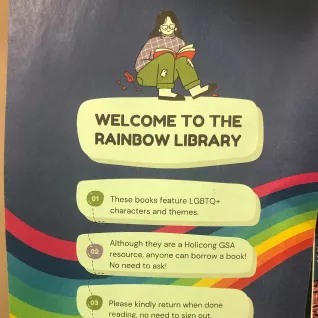

A supportive space makes a big difference in how LGBTQ+ students experience their school environment—the safer the space, the more empowered a student becomes to learn and grow.
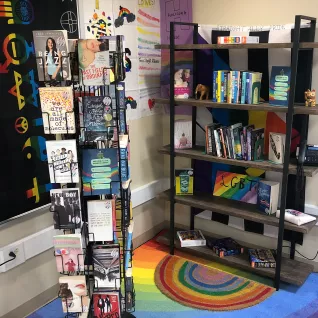

The GSA club featured an LGBTQ+ classroom library, where the titles that were chosen were deliberate, and mirrored the stories of the LGBTQ+ young people in the club.
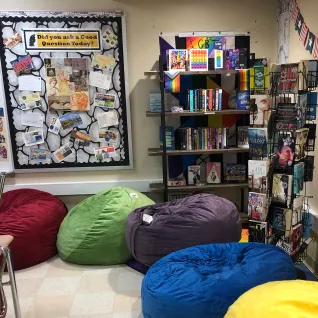

A school or classroom that serves as a mirror when it reflects LGBT+ students and their experiences back to themselves increases feelings of connectedness and promotes diversity about the myriad of identities in their communities.


The Rainbow library is a space where everyone’s full identity is included and celebrated—Mr. Willard's pumpkin!
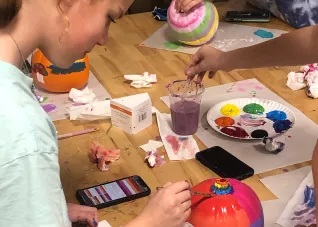

All students deserve a school that nurtures their curiosity, imagination, spirit, talents and desire to learn.
NEA has curated resources to support LGBTQ+ students and educators. Learn how to create safe, inclusive, and affirming school environments, teach about sensitive topics, and find resources such as model language to advance pro-LGBTQ+ policies.

